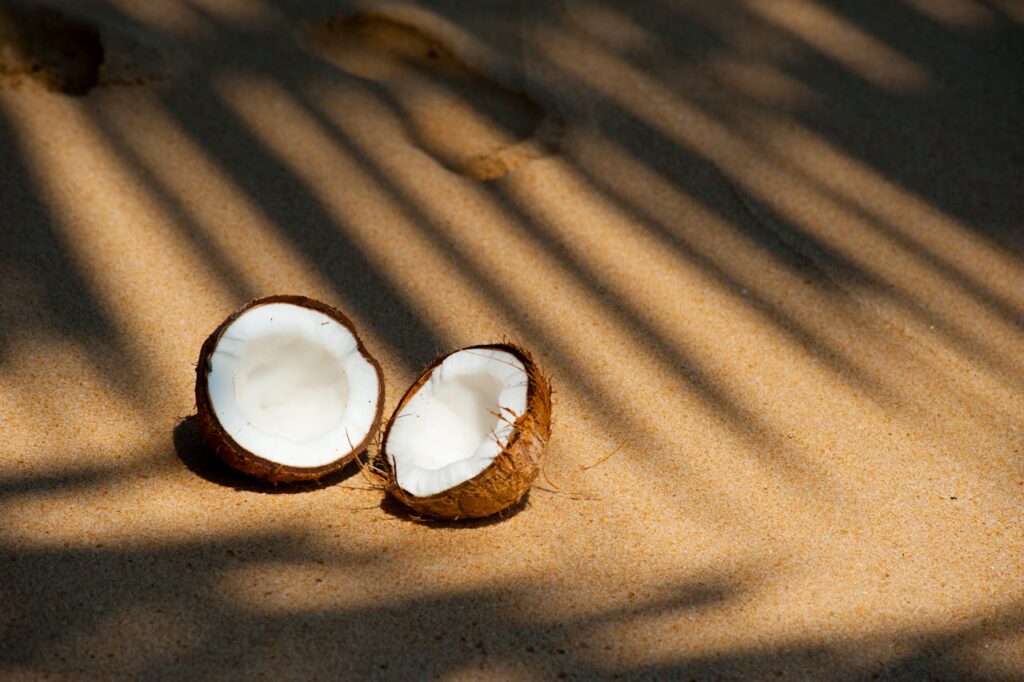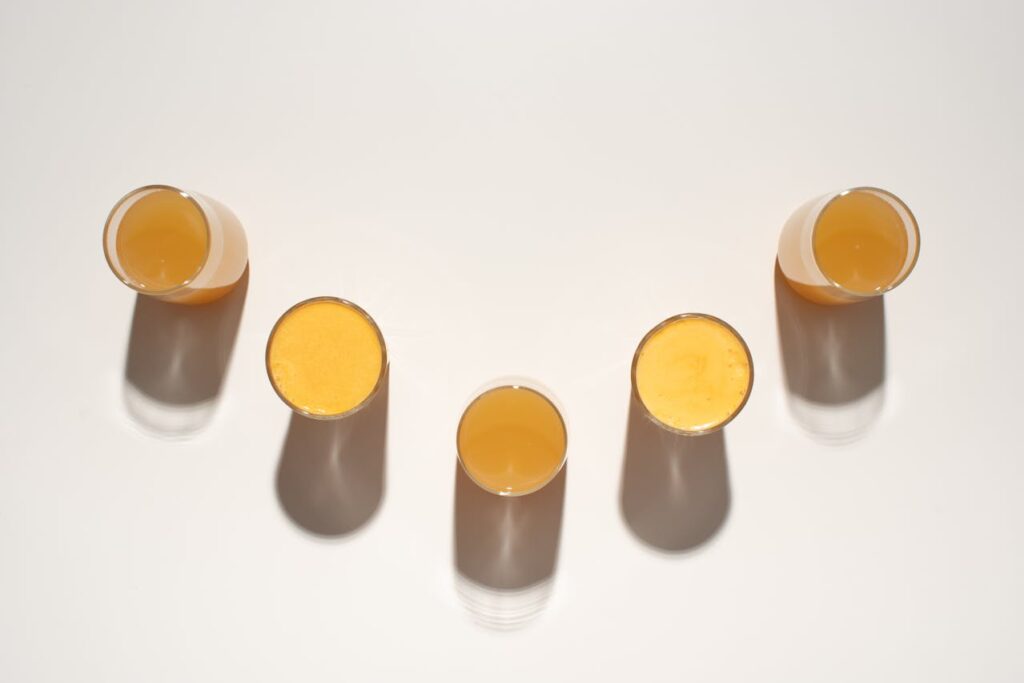
How to Make Lube at Home
DipakShare
How to make lube is a question that can pop up in your mind, especially in the heat of the moment. You’re horny and hard, but your bottle of lube just gave up on you.
What do you do?
Do you order online and wait for days? Do you take the car out and visit your local pharmacy?
Or you search online, “How to make homemade lubricant?”
The last option is pretty helpful if you have 5–10 minutes. Let’s find out more.
Why Make Your Own Lube?
Before you learn how to make lubricant, it is necessary to know why. People ditch store-bought lubes for several reasons:
Say goodbye to Irritants:
Commercial sexual lubricants may sneak in some pretty harmful ingredients that can wreak havoc on your skin, such as:
- Parabens: Pesky preservatives that mess with your hormones and may cause skin irritation.
- Glycerin: It can keep you moist but lead to yeast infections; not fun!
- Artificial dyes and fragrances: May make your intimate moments feel like you’re sitting on a fire ant hill.
- Propylene glycol: This stuff can dry your skin and cause irritation, especially if you have sensitive skin.
Save Some Bucks:
Some commercial lubes come with a price tag of liquid gold. It makes sense to follow some homemade lube recipes and save considerable money.
Best of all, you can cook up a larger batch than paying for a small bottle of store-bought lubricant.
Natural Preferences:
You can easily make homemade lubricants with natural ingredients. They are non-toxic and have names you can actually pronounce!
Some natural products also have skin benefits.
Convenience at Your Fingertips:
What if you’re horny and out of lubrication in the remote Alps?
Making your sex accessories at home means you have a backup plan. You can create your mix without waiting for the delivery guy to arrive.
Read more: How to Make a Pocket Pussy at Home.
Safety First: Before You Start

Let’s discuss safety before you learn how to make homemade lube. This will help you avoid unpleasant surprises.
Skin Sensitivity:
Do a skin patch test for potential irritation or allergic reactions.
- Apply a small amount of your personal lubricant to a less sensitive area, like the inner forearm.
- Wait for 24 hours.
- Check for any redness, itching, or discomfort.
- Use your lube alternative freely if everything is okay.
Pro tip: Take extra precautions if you have a history of allergies or sensitive skin.
Ingredient Quality:
Always use high-quality, pure ingredients for a safe and smooth experience. Look for items that are organic, unrefined, and free from additives.
Additionally, read the label to ensure no hidden nasties in your ingredients.
Moreover, the fewer ingredients, the better.
pH Balance:
pH balance is crucial for vaginal health. Choose ingredients wisely if you intend to use your product with a female partner.
They should not disrupt the vagina’s healthy pH balance.
Household items like aloe gel and flax seeds don’t disrupt pH balance. However, avoid baking soda or any alkaline substances.
Sperm Mobility:
If you're trying to conceive or avoid pregnancy, it's essential to note that some ingredients in homemade lube recipes may affect sperm mobility.
However, it's crucial to understand that lube is not a reliable method for preventing pregnancy, and you should always use additional protection if needed.
For more information, check out our dedicated post on the relationship between lube, sperm mobility, and conception.
Storage and Shelf Life:
Proper storage and awareness of shelf life are crucial to keeping your DIY lube safe and effective.
- Cool and dry: Store your sex lubes in a cool, dry place away from sunlight. Heat and light can spoil the quality of your lube options.
- Airtight containers: Use clean, airtight containers to prevent contamination and prolong shelf life.
- Label It: Always write the date of the lube production and its expected shelf life. This way, you’ll know when to make a fresh batch.
Homemade Lubes to Use Right Away
These simple ingredients are your quick answer to the question, “How to make homemade lubrication.” You can readily use the common household items below when in need.
Coconut Oil
It’s a popular choice for natural lube alternatives with silky texture and skin moisturizing properties.
You can take the oil out of the bottle, rub it in your hands, and apply it wherever necessary.
Coconut oil and latex condoms don’t go together, as they may tear. Go for nitrile or polyurethane condoms instead.
It’s safe for silicone and glass toys, but may degrade some rubber or jelly toys.
Aloe Vera Gel
Aloe vera is another excellent natural lubricant with soothing and hydrating properties. Use pure, 100% aloe gel, or make your own by scooping the gel from an aloe leaf.
Apply it directly on your skin.
This is a water-based lube and condom-safe for all types. It is also compatible with all types of sex toys.
For more options, check out our ranking of the best water-based lubes.
Olive Oil
Regular or virgin olive oil offers a thicker, oil-based lubricant option. It also lasts long.
Rub some oil in your hands and apply it freely.
Olive or pure olive oil is not compatible with latex products and condoms. They may also degrade rubber, jelly, or silicone toys.
Vegetable Glycerin
Pure vegetable glycerin provides a slick option that’s safe and effective.
Use a small amount directly from the bottle and apply it wherever necessary.
Veggie glycerin is safe to use with all types of condoms and sex toys. Please check the manufacturer’s guidelines to be sure.
Personal Mixtures
You can combine the ingredients above to make custom DIY lubes. You will find recipes below with these items to skip commercial lubricants altogether.
Use the items in reasonable amounts, and always keep sex toy and condom compatibility in mind.
These ingredients don’t pose any threats, except for people with an allergy history or sensitive skin. Therefore, always test on a small skin area before use.
Read more: Silicone vs. Water-Based Lubes – A Comprehensive Comparison.
How to Make Lube at Home
Itching to get wet and slippery? Below are a few quick DIY lubricant recipes to whip up at home in minutes.
Recipe 1: Coconut Oil and Aloe Vera Gel Lube

Base: Oil
Ingredients:
- Organic coconut oil (fractionated counts, too)
- Aloe vera gel
Optional:
- Organic olive oil (2 parts)
- Essential oil
Instructions:
- Heat the organic coconut oil in the microwave if it’s solid. You don’t need to heat fractionated oil.
- Mix equal parts of the oil and aloe gel in a jar. Add the olive oil and 5 drops of your chosen essential oil.
- Stir well and enjoy the ride.
Shelf life:
The mixture should last for 2–3 months at room temperature. Throw it away if you notice any change in color or smell.
Recipe 2: Flax Seed and Water Lube

Base: Water
Ingredients:
- 3 cups of water (filtered)
- 1 cup of flax seeds
Instructions:
- Pour the water into a pan and bring it to a boil.
- Add the flax seeds.
- Boil the mixture for about ten minutes until the seeds are soft.
- Remove from heat once it attains a gel-like consistency.
- Strain the seeds using a fine mesh or cheesecloth.
- Let it cool before use.
Shelf life:
The homemade lube can last up to 2 weeks in a refrigerator.
Recipe 3: Coconut Oil and Beeswax Lube

Base: Oil
Ingredients:
- 1 tablespoon of beeswax
- 1/3 cup of organic coconut oil
- Essential oil
Instructions:
- Melt the oil and beeswax in a double boiler.
- Sprinkle 5 drops of your chosen essential oil.
- Remove the concoction from heat and let it cool completely.
- Put the mixture in the refrigerator if it doesn’t harden at room temperature.
- Rub the concoction in your palms before applying.
Shelf life:
It lasts several months in a cool, dry place. However, check for signs of spoilage, like changes in smell or color.
Recipe 4: Cornstarch and Water Lube

Base: Water
Ingredients:
- 4 teaspoons of cornstarch
- 1 cup of water
Instructions:
- Mix the cornstarch and the water in a saucepan until fully dissolved.
- Heat the mixture on medium heat, stirring constantly, until it thickens into a gel-like consistency.
- Remove from heat and let it cool completely.
Shelf life:
It should last one to two weeks at room temperature. Any change in color, smell, or texture indicates spoilage.
Discover our collection of adult sex toys for men to try with your lube.
Storing Your Homemade Lubricant
You now know how to make lubricant. Next, let’s learn how to store your slippery ride.
- Use mason or glass jars to store your mixtures. They don’t react with lube ingredients.
- If you choose plastic, opt for BPA-free containers with secure lids. Clean and sanitize them before use.
- Avoid heat and light where you store your containers. Both can reduce the effectiveness and longevity of homemade lube substitutes.
- Some products made from aloe vera gel or flax seed may be refrigerated.
- Note the ingredients on the bottle, especially if you like experimenting.
Frequently Asked Questions
Are homemade lubes safe?
Yes, homemade lubricants are safe. However, people with allergies or sensitive skin should do a skin patch test first.
How much does DIY lube cost?
Making lubes at home shouldn’t cost you more than $5 to $10.
Which homemade lube lasts the longest?
Oil-based lubes made from coconut or beeswax last the longest.
What is the quickest way to make homemade lube?
Use coconut or olive oil out of the bottle. You don’t need to waste time making anything.
Can I use saliva as a natural lubricant?
Yes, you can use saliva as a natural lubricant, but it has limitations. It’s readily available and free, but it dries quickly, requiring frequent reapplication. Saliva may also contain bacteria that could increase the risk of infections, especially in sensitive areas.
Get Wet and Slippery
You’re ready to write a book on “How to make homemade lube.” The first chapter is about safety, where you use only safe and high-quality ingredients.
Next, conduct a test to see if it suits your skin.
Some items, like olive oil, aloe gel, and coconut oil, can be used as lubes right away. You can also make lubes by mixing water and cornstarch, coconut oil and aloe gel, and more.
Store your mixtures properly and be aware of shelf life.
Are you too lazy to make your lube? Try Fleshy Glide, the slickest, water-based lube, safe for all toys and condoms.
You are guaranteed a smooth and slippery journey.
